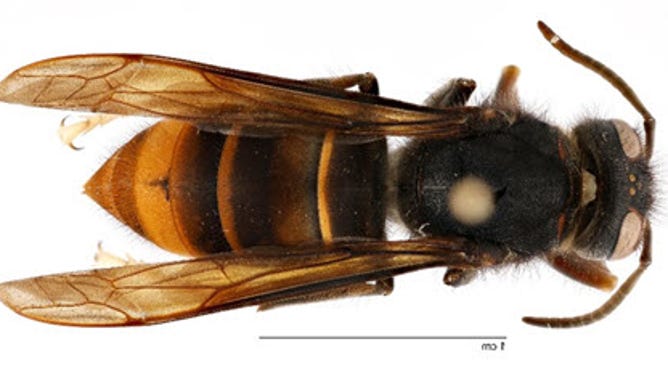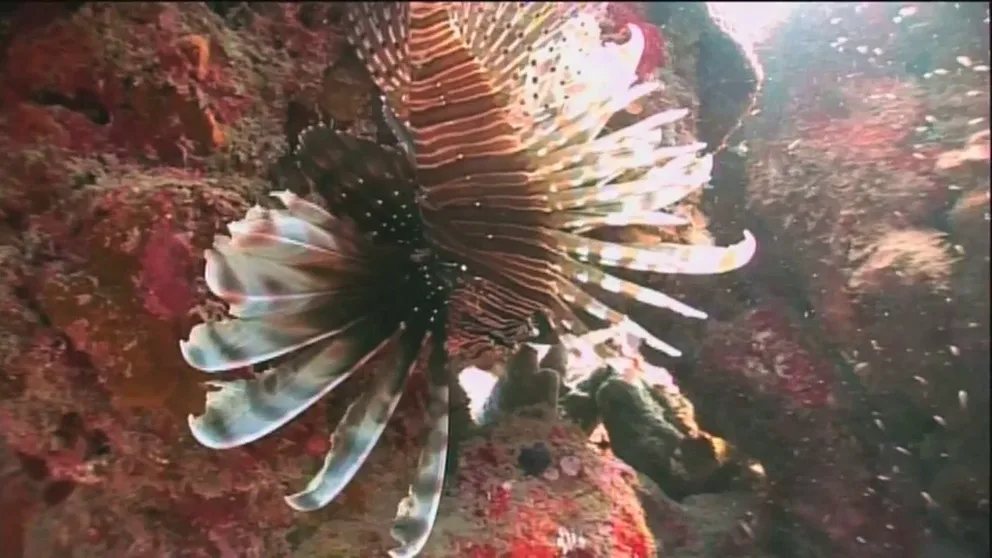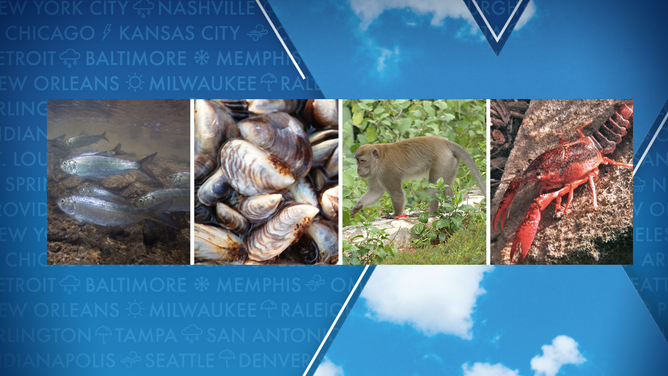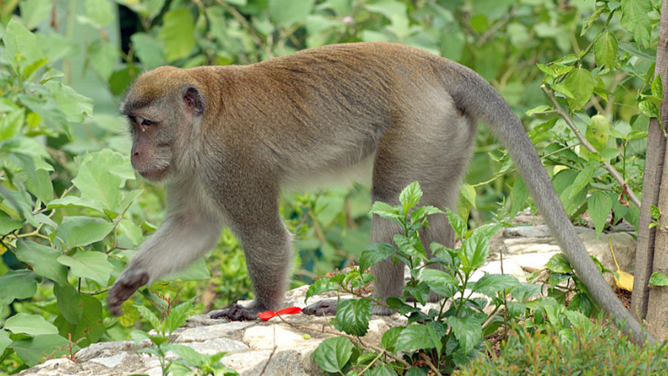Florida identifies next invasive species threat
The Florida Fish and Wildlife Conservation Commission reports more than 500 nonnative species have been spotted in Florida, with many originating from the animal trade. Two of the more notorious species that have grabbed headlines include the Burmese python and lionfish.
Invasive lionfish devours Florida's native reef fish
File: FOX News' Phil Keating took a dive in Florida to meet the invasive lionfish up close and personal in Florida. He spoke to an ecologist and professional divers who said the spiky fish are taking out the native fish.
GAINESVILLE, Fla. – A state known for its diverse ecosystems could find itself welcoming more invasive species, a first-of-its-kind study warns.
The study recently published in the journal Ecosphere said a team of researchers led by University of Florida scientists examined hundreds of animals, insects, algae and plants that could potentially find Florida ecosystems suitable for growth.
"Each species evaluated was given a score based on the likelihood of arrival, likelihood of establishment and spread, and their potential ecological, economical and human health impacts. The group of experts then met to form a consensus on ranking the species by risk level," the university stated.
Of the hundreds of types of organisms examined, 40 species were classified as being at high risk for an invasion and included a fish known as the alewife, zebra mussels, crab-eating macaques and red swamp crayfish.
UNIVERSITY RELEASES ‘SPY’ PYTHONS IN EVERGLADES TO BETTER UNDERSTAND INVASIVE SPECIES
Some species have already been spotted in the state and eradicated, while others are just waiting for a human’s malfeasance in order to cause problems.
"The one that wasn’t even on my radar was the macaque," Deah Lieurance, a project leader, stated. "But they’re already in the state in captivity, and as their name says, they’re good at eating crabs. This means they would have an impact on our native biodiversity. Plus, their relative, the rhesus macaque, is already established in the state…"
The Florida Fish and Wildlife Conservation Commission reports more than 500 nonnative species are thought to call Florida home, with many originating from the animal trade.
Two of the more notorious species that have grabbed headlines include the Burmese python and lionfish.
RELATIVE OF THE ‘MURDER HORNET’ FOUND ALONG US EAST COAST FOR FIRST TIME
Every species has the potential to alter the environment, economy and even human health, with billions spent globally each year on containment and management.
Potential ecosystem threats are constantly evolving, and species that weren’t considered to be a risk when the study was conducted could now be a menace.
Researchers brought up the case of yellow-legged hornets being spotted in southeastern Georgia, which is only a hop, skip and jump away from the Sunshine State.
The insect is a relative of the infamous 'murder hornet’ and are thought to pose a threat to native honeybees and other pollinators.

Yellow-legged hornet (Vespa velutina)
(Georgia Department of Agriculture / FOX Weather)
"As the saying goes, an ounce of prevention is worth a pound of cure," Lieurance said in a statement. "The majority of prevention efforts are initiated when the species has already been detected and often when it’s too late. This project strives to keep concerning species out and truly protect Florida’s biodiversity, unique ecosystems, socioeconomic infrastructure, and human well-being."


